Magnetic null-points
Magnetic null point calculation on three dimensional vector coronal magnetic field datacube
Understanding the large-scale distribution of the solar coronal field requires data-driven numerical modeling. In this context, Potential Field Source Surface (PFSS) extrapolation technique is commonly used to compute the global solar coronal magnetic fields using photospheric magnetic field distribution as boundary conditions. While the assumption of current-free corona in PFSS is restrictive in exploring the non-potentiality of the coronal magnetic fields, we can study the location of three-dimensional coronal null points that indicate potential locations of reconnection with such a simplified extrapolation method. Additionally we can also compute the squashing-factor which is indicative of current-sheets. We develop a python-based subroutine to calculate the null-point locations in a spherical coordinate system following the IDL module publically distributed with SSWIDL (originally written by Dr. Marc L. DeRosa). In order to calculate the squashing-factor we utilize k-QSL, an open source code suite developed by Dr. Kai Yang. As we progress through a phase of the solar cycle where the magnetic activity is approaching towards solar-cycle-maximum with reversal of the polar magnetic field polarity, we focus on such epochs of the solar cycle to understand the life-time of the coronal null-points. Here is a description of our ongoing research.
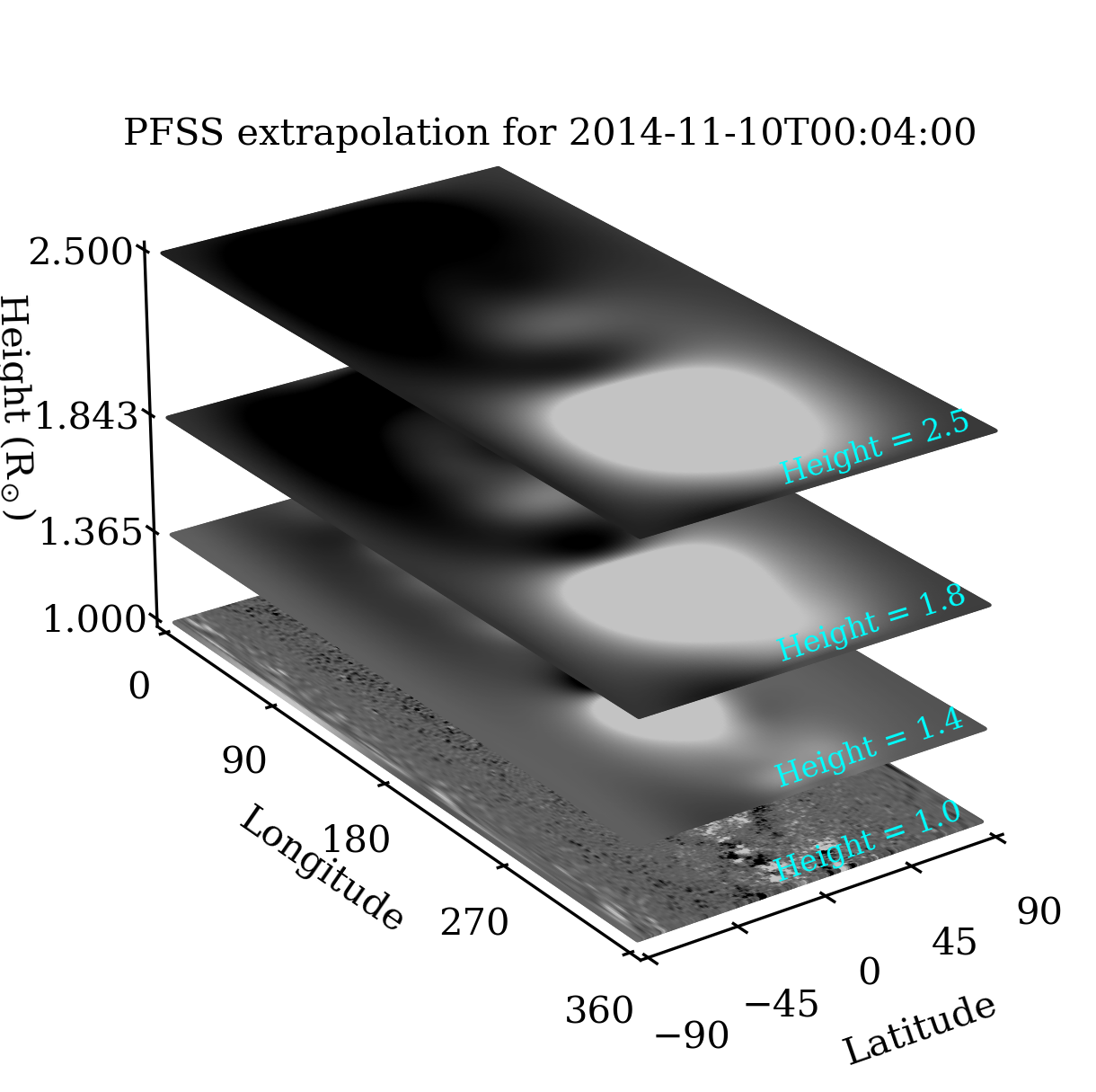
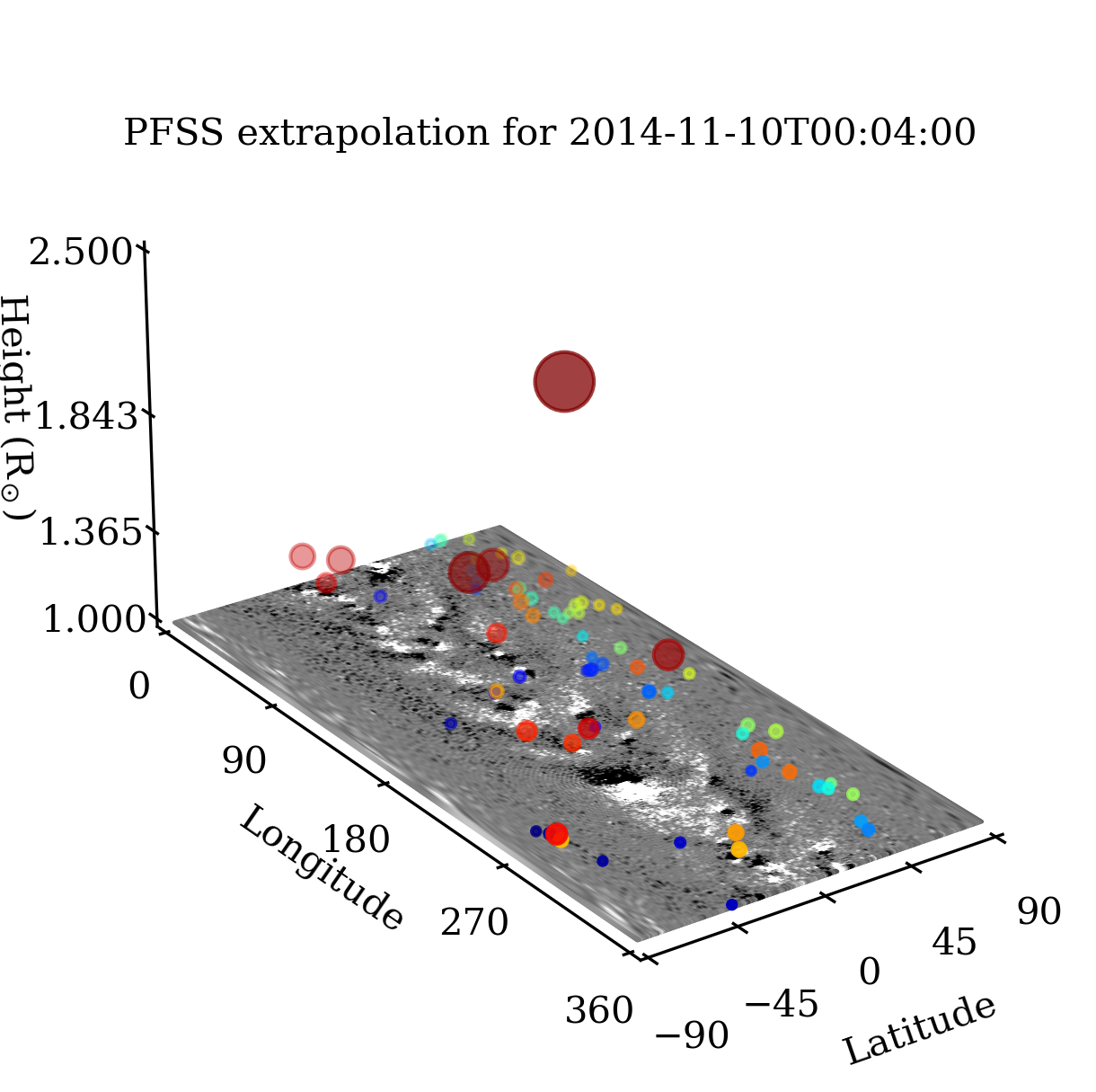
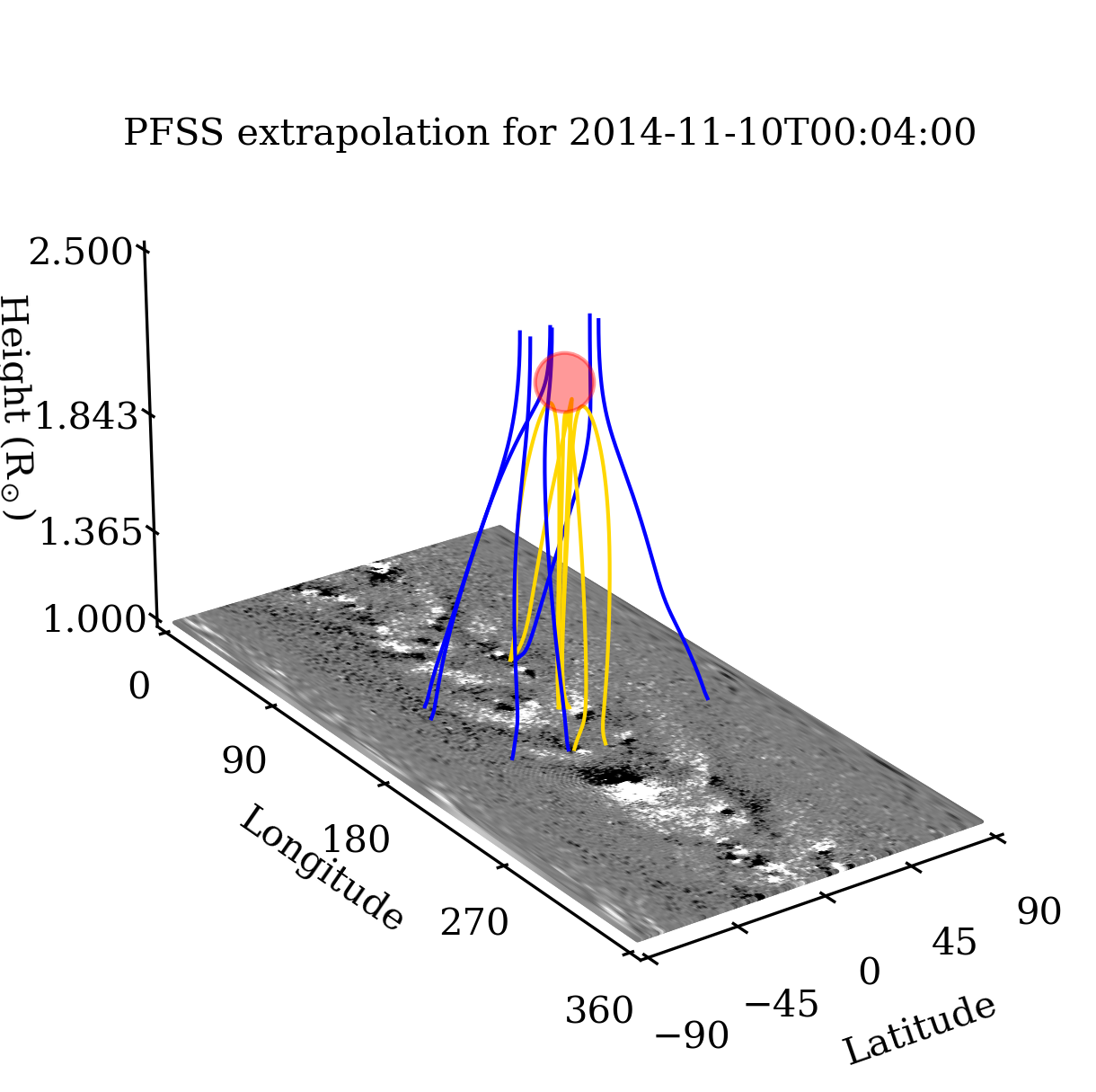
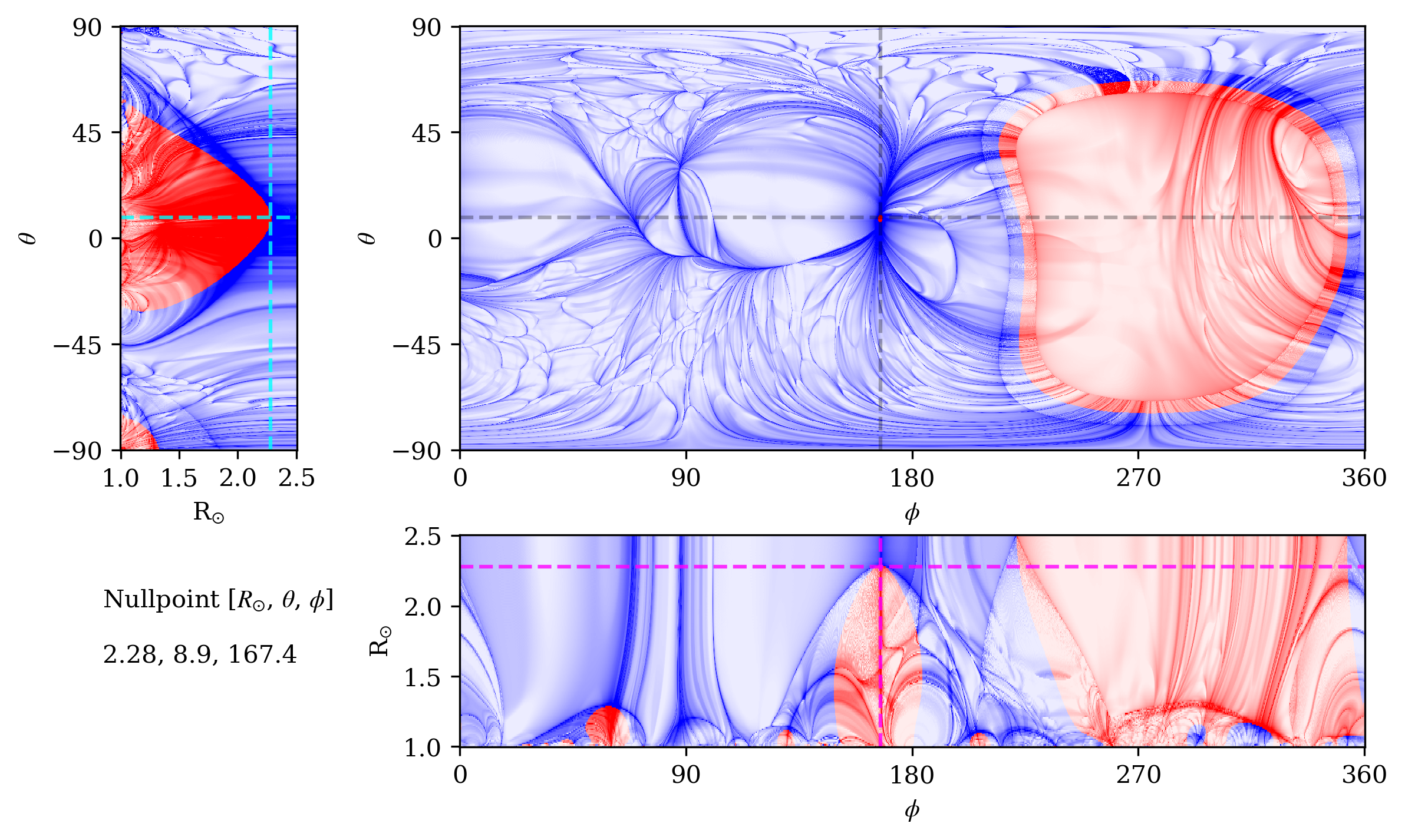
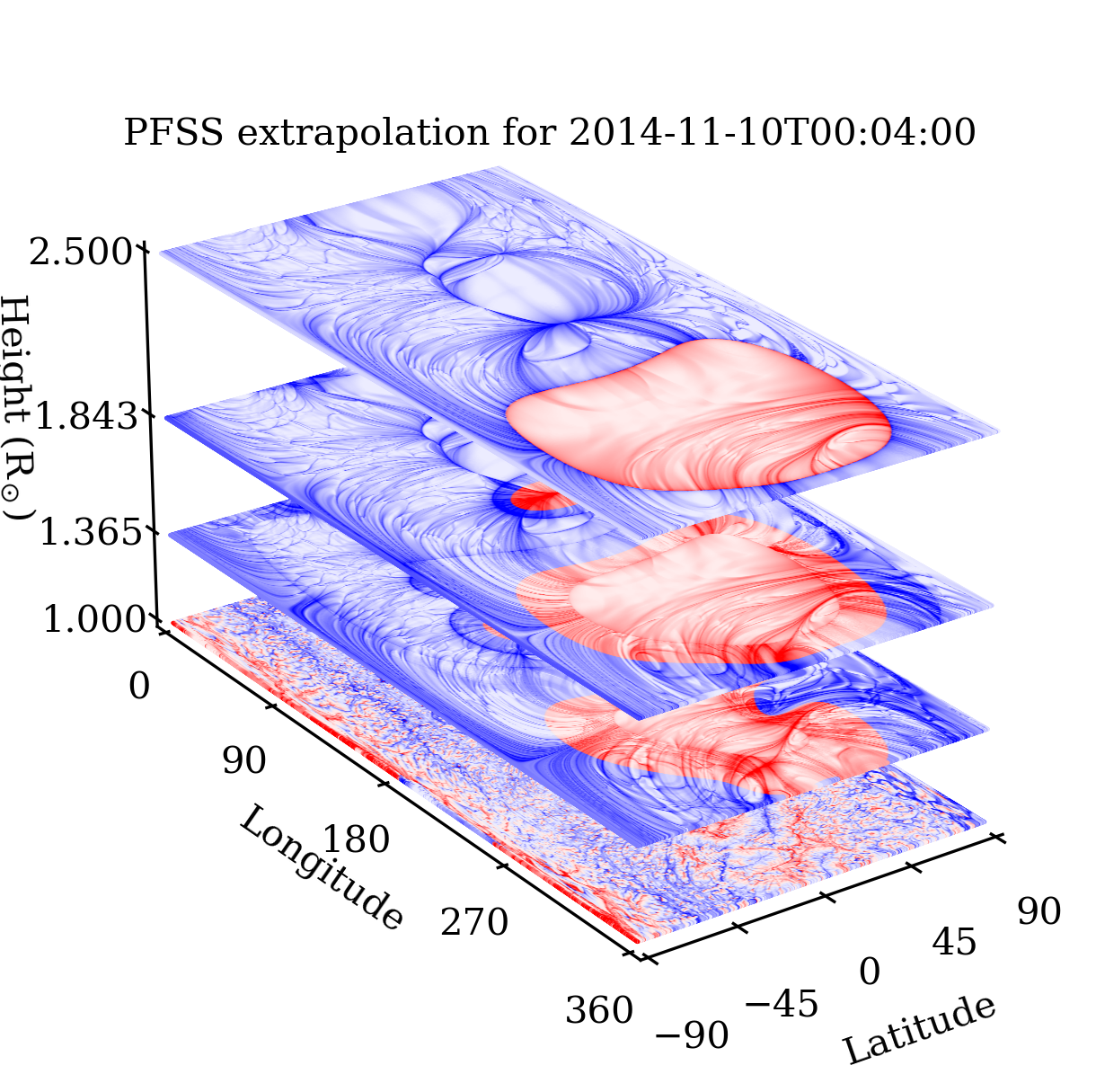
Such an analysis shows the distribution of the coronal magnetic fields and spatial distribution of three dimensional null points for a given photospheric boundary condition. This is an ongoing work to explore the location of null points in space and understand the potential location of long-lived reconnection sites over multiple solar rotations.